About this Blog: Little Rann of Kutch (LRK) is an interesting place. Containing one of the largest wildlife sanctuaries in India, the Wild Ass Sanctuary, LRK is also known for its expansive salt pans. Read this blog to know about our visit to Little Rann of Kutch, our experience of Jeep safari and our stay at Rann Riders Dasada.
Everything looked peaceful and calm as I craned my neck to look at the pink flamingos. We could not go nearer as the land was marshy and our shoes were getting stuck in the mud. At that moment, I wished I had a binocular, so that I could see the birds closely. The sun was just peeking from the horizon and the sky had an ethereal glow to it. We were at the Wild Ass Sanctuary in Little Rann of Kutch.
Little Rann of Kutch or LKR sprawls over an area of 5000 sq km. So, it is a bit strange to think of this place as “Little”, but it actually makes sense if you consider the salt desert of Great Rann of Kutch covering an area of approximately 18000 sq km. Little indeed!

The word “Rann” literally means salt desert. And we could see stretches of cracked terrain in all directions. We could see a few thorny shrubs scattered around the places. The land might seem barren, but Little Rann of Kutch is definitely not, for it contains some rare wildlife. This place has one of the country’s largest wildlife reserves, the Wild Ass Sanctuary, a place where you can spot the Indian Wild Ass or Equus hemionus khur.
Little Rann of Kutch
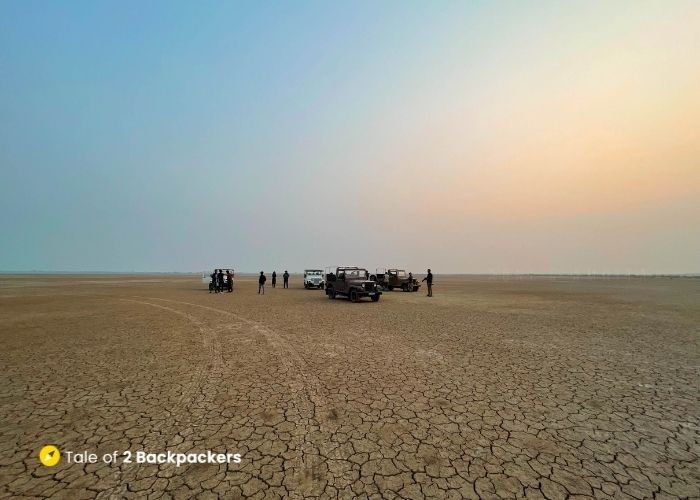
Little Rann of Kutch or LRK forms a smaller part of the entire Rann of Kutch in Gujarat. Little Rann is approximately spread along the five districts of Surendranagar, Banaskantha, Patan, Kutch and Rajkot.
During the winters, the place is known for its wildlife safari in the Wild Ass Sanctuary. Being a part of the Rann of Kutch, its landscape is unique, having endless stretches of salty mudflats. During the winters, the land at Rann is flat, barren and cracked. However, during the monsoon season, Rann is filled with water because of the reverse flow of sea water from the Gulf of Kutch.
There are about 364 hills spread across Little Rann known as bets. Only these bets remain above water during the rains and they become shelter for the wildlife during the monsoon.
While we are typically not wildlife enthusiasts, we enjoy such trips into the wildlife reserves whenever we get a chance. After our visit to Rann Utsav, we were at Little Rann of Kutch. We stayed at Rann Riders at Dasada and the morning safari was arranged by them.
Wildlife at Indian Wild Ass Sanctuary
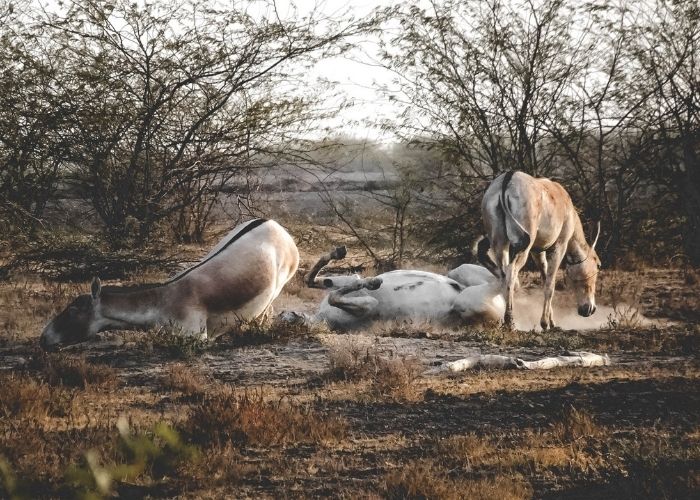
The Indian Wild Ass Sanctuary is quite synonymous with the Little Rann. The Wild Ass Sanctuary covers an area of 4953 sq km and is considered to be the largest sanctuary in India in terms of area.
The LRK Wild Ass sanctuary is the home of Indian Wild Ass, also known as Ghudkur or Khur. The Wild Ass Sanctuary was established in 1973 at a time when the population of the wild asses was rapidly declining. The wild ass looks quite graceful and appears as a cross between a horse and a donkey. They are quite similar to the Tibetan Wild Asses that we had seen on our Zanskar trip in October.
Apart from the wild asses, other wildlife that can be seen here includes desert fox, jungle cat, jackal and several birds.

Little Rann of Kutch also provides a satisfactory passage for several migratory birds that flow in from Europe and Africa. These birds make this place their home for the 4 to 5 months in winter. Over 350 species of birds are found in Little Rann of Kutch like Flamingos, Desert wheatear, Indian sandgrouse, Steppe eagle, Imperial eagle, Cinereous vulture, Griffon vulture, Harriers, Falcon, Owls, Cranes, Pelicans, Storks, Ducks, Geese and many more.
Little Rann of Kutch Entry Points
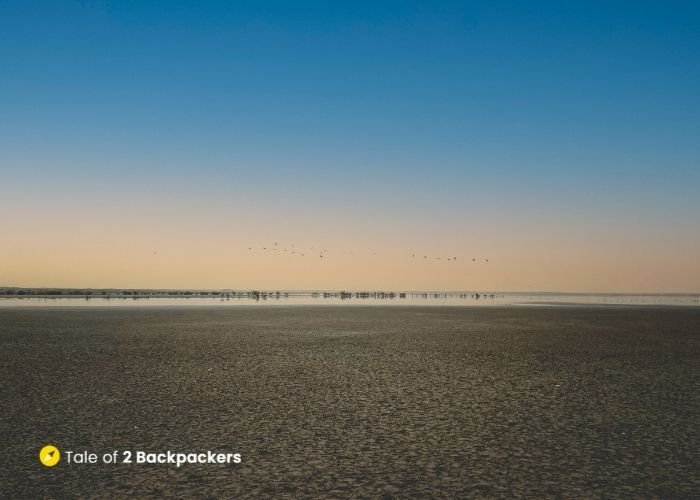
There are multiple entry points to the Little Rann of Kutch. The permits for jeep safari are usually given to the local resorts and they take the tourists to the sanctuary area. The most common entry points are Dasada and Jogad. There is another entry route through the Bajana creek. This entry is closest to the wetlands and hence you will get the best views of the migratory birds here.
Jeep Safari at Little Rann of Kutch
The best way to enjoy Little Rann of Kutch and to spot wildlife activities is to take a wildlife safari. Jeep safaris take place in the morning and in the evening and it takes you around the place.

Our jeep safari was arranged by Rann Riders, the resort where we were staying. Rann Riders has a number of open jeeps for safari along with knowledgeable and experienced guides. The safari usually lasts for 3 to 4 hours and takes you through various terrains like salt flats, wetland and grasslands. For birdwatching and wildlife enthusiasts, special trails have been curated so that you get the best experience of Little Rann of Kutch. Usually, the bird watchers opt for the marshlands and those in search of mammals go towards the dry deserts.
Our Experience of Jeep Safari at LRK Wildlife Sanctuary
It was still dark when we got ready for the jeep safari. The entry to the sanctuary is about 40 to 45 minutes’ drive from Rann Riders. There were 5 of us in a single jeep and we huddled together in the early morning cold and started our drive to see the wonders of nature.

At the crack of dawn, we were at the fringes of the wildlife sanctuary. The concrete roads gave way to muddy terrains and soon we were in the wilderness. The landscape was dotted with a few shrubs.
And then there was endless stretch of brown! There were empty, vast expanse of land. We have entered the dry mudflats. Our guide had already stopped the jeep. There was a bleak emptiness and I could see nothing from horizon to horizon. It felt strange. It felt surreal! We were at Little Rann of Kutch.

Flamingos
A lake was seen at a distance and our guide simply told us to look for flamingos. I squinted my eyes to look for the pink avian, but could only see little specks. We started walking towards the lake to get a better view of the birds.

Unfortunately, the topsoil came out to be quite deceptive. The mud was soft and our feet sunk into the soil. We really had to tread carefully to reach near the lake. I ignored the mud on my feet and went ahead till I could see the flamingos. Bright pink colours hovered over the blue waters. They were indeed a beautiful sight.
We could also see some cranes and storks near the lake.
And yes, the sunrise is also magical at Little Rann of Kutch! I had previously witnessed an incredible sunrise at Manas National Park and this was another one!

Indian Wild Ass
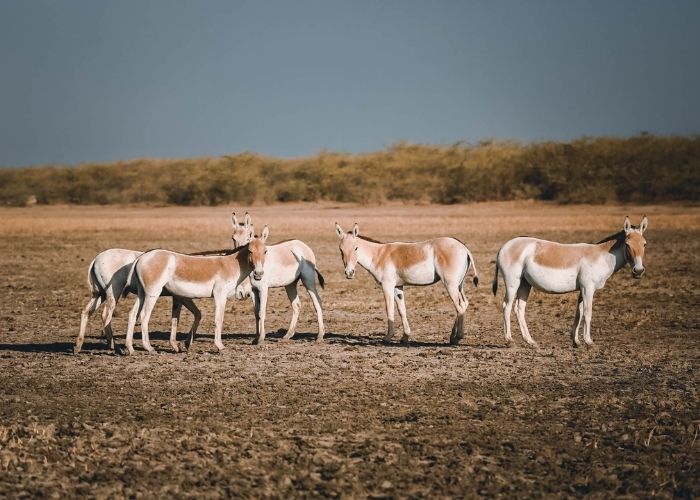
From the flamingos, we drove towards the shrubland to see the Indian Wild Ass. The Indian Wild Ass, also known as gudkhur are said to be quite swift-footed. If you chase them, they can run at a speed of almost 50km/hr.
As we drove, we spotted a few asses. They are usually seen in small herds. I have seen beautiful pictures of running wild asses and wished to see them running. But the few in front of us seem to be quite friendly. They simply stood at a distance and kept looking at our jeep. Our guide had stopped the jeep so that we could get a good view of them. He did not want to take the jeep near the wildlife lest it spooked them.
After posing for us, the herd moved away and we resumed our journey. We saw some bets on our way and another herd of wild asses. Well, my safari luck is usually not that great. However, this time I got a view of the wild ass, something that I had come here for. And not to forget, the flamingos. It was indeed magical.
Salt Pans of Little Rann of Kutch

Apart from the wildlife, Little Rann of Kutch is also known for its salt pans. About 75% of India’s salt is said to be generated from this area. The extraction of salt is a long and gruelling process and is done by the Agariya community, also known as the salt farmers.
We visited one of the salt pans and spoke to the Agariya. He explained to us the process of salt farming and the effort they have to put into the process. It was indeed humbling to know about the salt farming and the Agariyas. While salt is an essential commodity, the salt makers actually get a raw deal.
Rann Riders

What I really loved about Rann Riders Resort is the way it has blended with the surroundings. Located a few kilometres from the Dasada entrance to the Little Rann of Kutch Wild Ass Sanctuary, Rann Riders consists of beautifully and ethnically designed cottages surrounded by a lot of greenery.

When we reached Rann riders, it was almost 10 in the night. Nevertheless, they welcomed us and after having dinner, we simply crashed into our bed. After all, we had to go for the early morning safari the next day.
Rann Riders also have quite an interesting history. The owner of the resort is the descendant of Baktiar-ud-din, who had provided military assistance to the Sultan of Gujarat in the 15th Century. The Sultan was quite happy with his service and gifted him 24 sq mile of land in and around Dasada. He was also given the title of Malik-Bakhan and the family still uses “Malik” as their surname.
In keeping with the traditions, the owners of Rann Riders provide undivided attention to all their guests so that they enjoy the Kathiawad hospitality to the best.
Like the other resorts in Little Rann of Kutch, Rann Riders also provide village tours, wildlife safaris, bird watching tours and other cultural experiences to their guests.
Cottages at Rann Riders

This is something that I felt I should mention. Rann Riders is a beautiful property and one of its USPs is its ethnically built cottages made from local materials. The cottages are so built that it gives the appearance of a village.
There are 3 types of cottages at Rann Riders –
- Kooba houses of the Bajania community of Dasada – rectangular cottages made of mud.
- Bhunga Houses of Rabaris of Kutch – circular eco-huts made of mud.
- Stone cottages.
I stayed in one of the Bhunga houses that had a beautifully decorated interior.
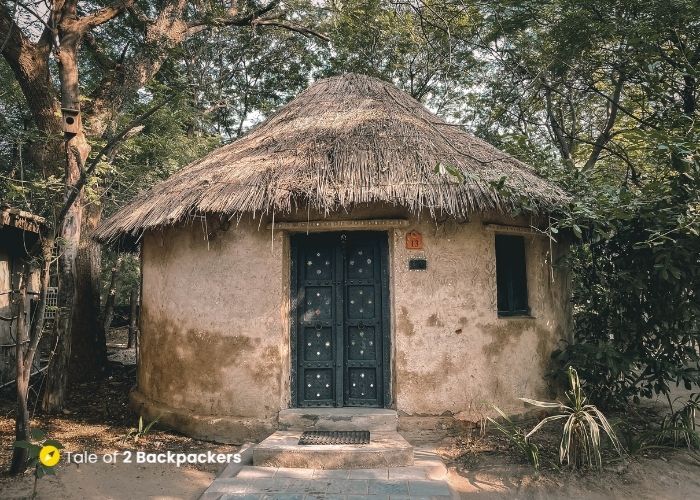

The property has lots of greenery. In front of my cottage, there was a small pond. In the morning I could see ducks and other birds. I really had a wonderful time roaming aimlessly around the property and enjoying the peace it had to offer.
Rann Riders offer Buffet option for all the meals. Both vegetarian and non-vegetarian items are available.

Rann Riders offer a lot of activities to their guests. Even if you visit during the monsoon when the Wild Ass Sanctuary is closed, you will have enough to do. Rann Riders offer camel safari, horse riding and bike trips apart from the jeep safari.
Camel safaris will take you to the nearby villages and nomadic settlements on camelback or camel cart.
The resort also arranges for local cultural performances.

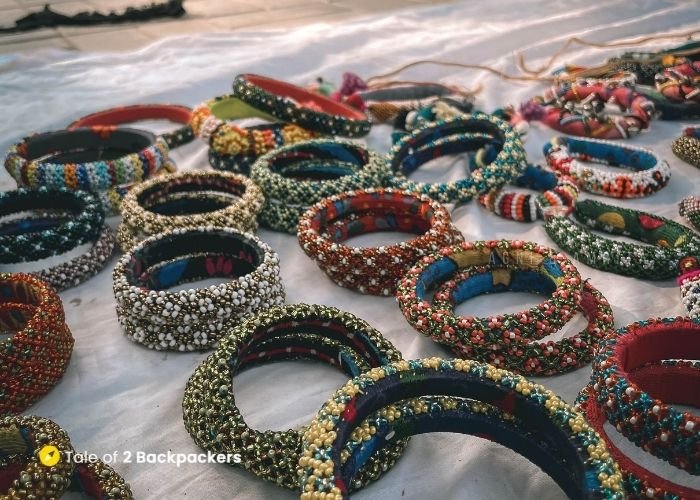
Women from nearby villages come to Rann Riders Resort to display their handicrafts. They sell handmade jewellery , traditional outfits, home decorations and other handicrafts. So, you can experience both adventure and culture while staying at Rann Riders. Check out their website for more details.
How to reach Little Rann of Kutch?
To visit Little Rann of Kutch, you probably will arrive at Ahmedabad first. Ahmedabad is well connected by flights and railways from all the major cities of India.
Since LRK has multiple entry points, how to reach the place depends on where you are going to stay. I will cover Dasada first as I stayed at Rann Riders in Dasada.
How to reach Dasada?
The distance of Rann Riders Dasada from Ahmedabad is 95 kilometres. You can hire a private car to reach Dasada from Ahmedabad.
Viramgam is the nearest railway station. Rann Riders is located about 30 km from Viramgam. The resort can arrange a pick up and drop from the Railway station.
If you wish to enter from Bajana, once again Viramgam is the Railway station.
If you are already at Bhuj attending the Rann Utsav, then you can take a train from Bhuj to Viramgam and then proceed towards your stay.
Where to stay at Little Rann of Kutch?

While I stayed at Rann Riders, there were other resorts as well. Here are a few popular choices –
- Rann Riders
- Bhavna Farm and Resort
- Royal safari Camp
- Eco Tour Camp
What is the Best Time to Visit Little Rann of Kutch?
LRK is a salt desert and gets quite hot during the summer months. One of the best times to visit Little Rann of Kutch is just after the monsoon during October and November. The grasses are green and fresh and ideal for wildlife spotting.
December to March has a pleasant and cool temperature and is definitely a good time to visit. From April, the area begins to get hotter and it gets quite unbearable during the summer.
The LRK Wild Ass Sanctuary remains closed during the monsoon from June to September. The Rann usually gets filled by water during this time.

Other Places to visit
Modhera Sun Temple
Modhera is only about 45 km from Little Rann of Kutch and is famous for its beautiful Sun Temple. This temple is undoubtedly one of the finest architectural feats of the Solanki dynasty.
Rani ki Vav and Patan
Patan is located about 70 km from LRK and is famous for Rani ki Vav, an intricately carved stepwell. Rani ki Vav has been declared a UNESCO World Heritage Site and is definitely a treat to the eyes.
You can also visit the handlooms and weaving centres of the famous Patan Patola fabrics.
So, what are your thoughts on Little Rann of Kutch? Would you like to experience LRK with the Rann Riders? Do let us know in the comments below.
If you like this post and found it useful, please share it with your family, friends and neighbours.
Pin it for a later read!
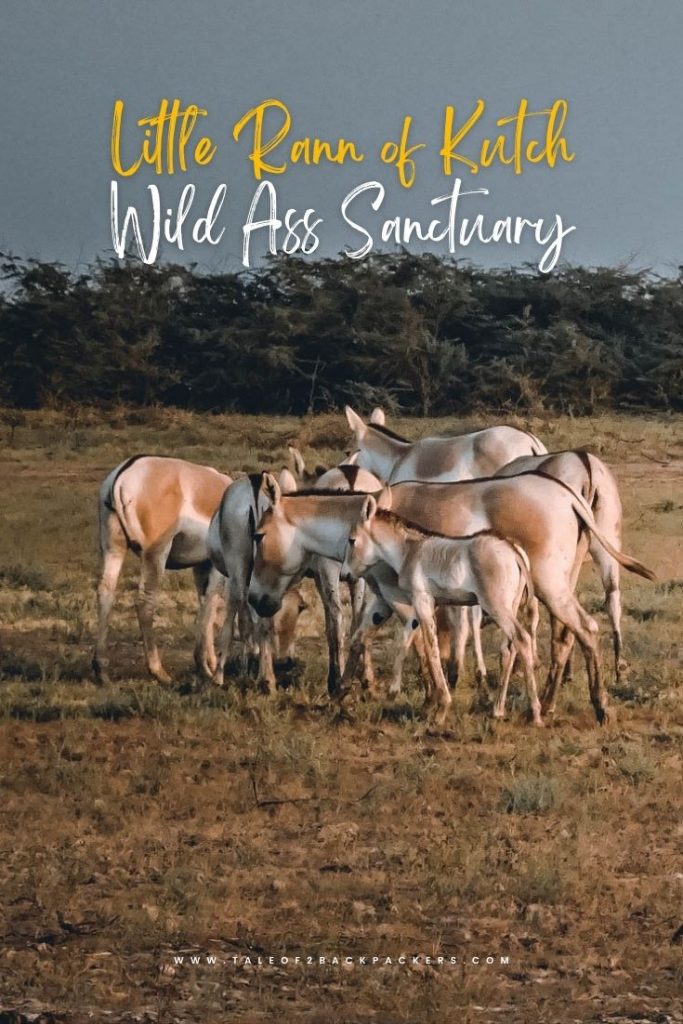
Disclosure: I was invited by Gujarat Tourism and the Ministry of Tourism, Government of India to explore Little Rann of Kutch and some other areas of Gujarat. However, all opinions in this post are unbiased and of my own. A special thanks to the team for taking care of everything and making this trip memorable.

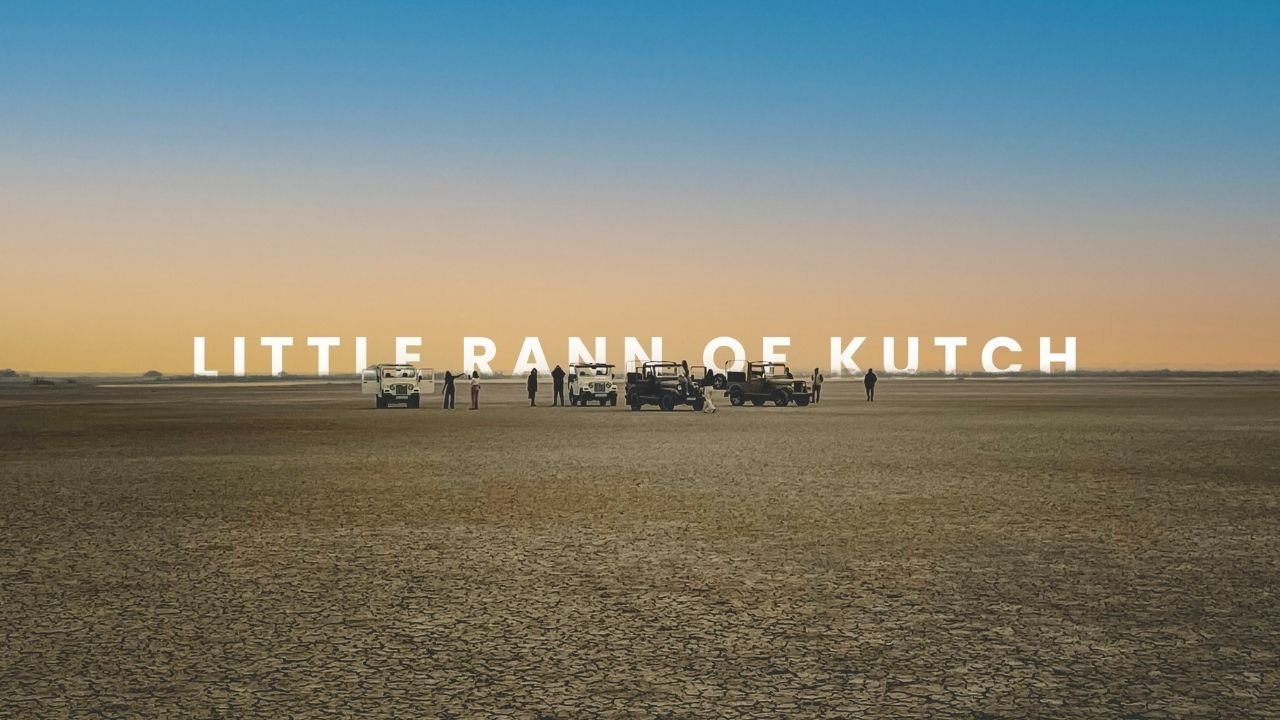





0 Comments